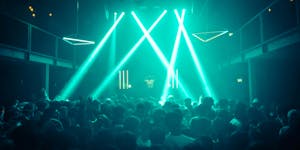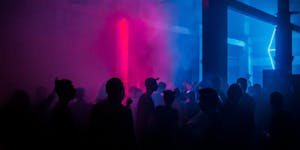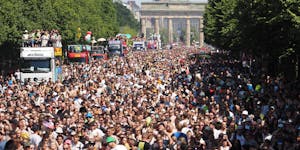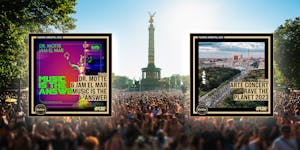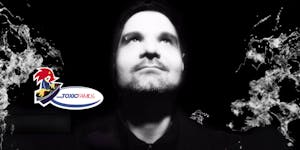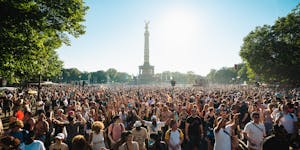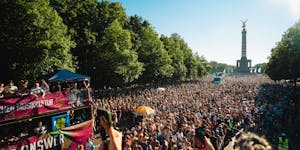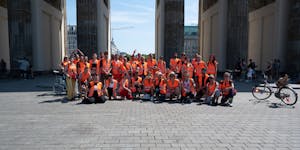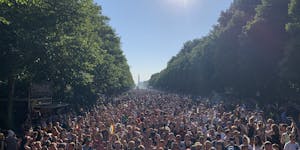The Intangible Cultural Heritage of Techno in Berlin
Guest article by DJ Westbam
Attempt of a hint of an “observing participant”.
Prior Comment
The first dance of mankind vanished as mysteriously as the first dance beat faded away millennia ago.
Rhythmic sequences of human-made sounds, later called “music”, accompanied by rhythmic movements, later called “dance”, are probably the earliest, original, and perhaps constitutive human cultural achievements. They may stand, above all else, at the cradle of Homo sapiens sapiens.
“In song and in dance I express myself as a member of a higher community.”
(Frankie Goes To Hollywood – “Welcome To The Pleasure Dome”)
Marcel Duchamp once claimed that the French word “art” originated from Sanskrit and simply derived from “to make”. New culture was usually “made” in the history of humanity quite casually. And most likely, it was made before there was even a concept of culture.
Summer of Love (1988) and November 9, 1989
Techno culture was “made” in Berlin since the late 80s. In the autumn of 1988, a lost group of people danced in a basement club called “UFO” to a new dance style called Acid. The UFO was located in the West Berlin section of Köpenicker Straße.
Like the cave painters, these maybe 50 or 60 people, probably had no idea of the great cultural moment that this basically was – none of these individuals could have foreseen what it would become just a few years later. The significance and influential power that this new culture would develop in this city in the following years.
Perhaps nothing would have come of it if things had gone differently. Maybe it would have remained with that fleeting, now long-forgotten moment. If, by chance, the Berlin Wall had not also fallen a year later. After that, entirely new people emerged. And the Acid House/Techno House sound connected with the magic of the moment like no other genre. It provided a sound to the moment that changed the city, the country, and the world – a sound that was as fresh and intense as the situation itself.
Today, we wouldn’t be discussing whether Techno culture in Berlin qualifies as “Intangible Cultural Heritage”. But, as the overall story unfolded, three years later, over a hundred thousand people were dancing at the Love Parade on Kurfürstendamm. And just ten years later, over one million people from all over the world gathered around the Berlin Victory Column.
A new era began, and Techno became the soundtrack of this new era, originating from Berlin.
1988, UFO
The psychedelic-avant-garde pumping “Acid” sound that played at UFO had formed in Chicago in 1987 as a smaller “underground” subgenre of Chicago house music. The following year, 1988, in London, the capital of the British Pop Nation, Acid was given a smiley face and an unceremoniously superimposed “swinging 60’s” superstructure of hippie ideology (“Love and Peace”). Under the banner “Summer of Love”, Acid became the first major pop hype of the just rising “Age of the DJ Mixer”, which conquered the dance floors of the world in the same year.
With a slight delay, the Summer of Love reached a secluded, somewhat eccentric, and relatively resistant-to-fashion place that had not particularly stood out in pop history: West Berlin.
1945 – A Short Prehistory (Part 1)
Due to the division of Germany after World War II and the resulting “insularity” of West Berlin, a new living situation arose for the citizens, which many perceived as “extreme”. The walled-in, bisected city became steadily less attractive as a business location, especially after 1961. While industrial giants such as Siemens and AEG also moved their jobs to West Germany, from the late 1960s Berlin increasingly became a point of attraction, indeed a place of longing for a wide variety of social subscenes that felt attracted precisely by the desperate and extreme nature of the situation. And above all, they had one thing in common: they were not looking for a regular life with a regular work biography, but for “alternative ways of life”.
1701 Potsdam, Sanssouci – A Short Prehistory (Part 2)
A higher tolerance for “alternative ways of life” had a fairly long tradition in Berlin, which had already come to the fore in the early 18th century. With the well-known motto of Frederick the Great: “Each according to his own fashion.”
Roaring 20’s – A Short Prehistory (Part)
The search for “bliss” in the sense of the old Fritz (referring to Frederick the Great) found echoes throughout Berlin’s cultural history. Another example would be the ultra-liberal and vibrant nightlife of Berlin during the so-called “Roaring 20s.”
In the constant flux that was always typical of the city, the question of the “fashion” that could perhaps lead to bliss arose anew in 1980s and 1990s Berlin, both in the East and the West.
1968-1988 in the Sectors of the Western Powers
While many native Berliners left the city in search of employment, careers, or simply a “more normal,” less extreme life situation in “Wessiland” (referring to West Germany), a new form of “Berliners-by-choice” began to emerge, drawn to the extremity of the city’s situation. Artists, hippies, punks, homosexuals, deserters from the West German army, perpetual students, anarchists, political fanatics, radicals of all kinds, sympathizers of the Red Army Faction (RAF), and “colorful” personalities from around the world (with the presence of David Bowie and Iggy Pop as the most prominent examples) increasingly populated West Berlin from the 1970s onward.
In short, people from the “leftfield” of society were more numerous in the population of West Berlin than in the rest of the country, forming the sociological basis for all things “quirky” and “off-culture,” from which later the unique and peculiar Berlin version of Techno culture would sprout. And just like Berlin itself, it was somewhat strange, somewhat lost, and somewhat “poor but sexy.”
In all these “quirky” sub-scenes, perhaps the only common denominator was a mistrust of an excessively externally determined and heavily state-regulated life.
Ironically, the West German state did a lot to make Berlin interesting for these rather defiant social groups. The curfew was abolished. The Berlin Allowance was introduced. Whether it was about open prostitution, occupied houses, or an exceptionally tolerant drug policy (see also: “We Children from Zoo Station”), the impression arose that if West Berlin couldn’t be made attractive for the working population, it could at least be made attractive for someone.
1980
Anarchistic tendencies, which are still typical of Berlin techno today, haunted large parts of West Berlin’s cultural life. In a narrower sense, there were two musical sub-scenes that influenced the development of Berlin techno culture.
On the one hand, there was the low-fi and low-budget sound of “Geniale Dilettanten”, of bands like “Einstürzende Neubauten”, “Die tödliche Doris” or “Sprung aus den Wolken”, or even the minimalist sequencer sound of the Düsseldorf band “DAF”.
On the other hand, it was the gay dance underground around the Schöneberg club Metropol, where people already danced the night away in the late 70s, to a “Four To The Floor” beat always pumping at 130 BPM.
At UFO, noise and avant-gardism of the Geniale Dilettanten seemed to be mixed together with the “uplifting” energy of a gay Hi-NRG party. The contrast between disco fun and the enjoyment of the snottiness of punk, and innovative experimental music starkness, seemed to go together for the first time.
GDR 1949-1989 – A Brief Glimpse Beyond The Wall
The living situation of Berliners in the eastern part of the city had developed in a completely different way than in West Berlin – better: in a contrary way. Here, as is well known, the communist state of the SED (Socialist Unity Party of Germany), installed by the Soviet occupying power after 1945, ruled with a hard hand and suppressed to the best of its ability, and with all the means of the police and surveillance state at its disposal, all the suspicious movements of its citizens who strove for personal freedom. All those impulses that ran counter to the state-ordained “path to happiness”.
And while in the laissez-faire part of the city, gays and lesbians had long been demonstrating loudly, shrilly and half-naked for their rights on the Kurfürstendamm during the Christopher Street Day (CSD), and general civil disobedience had grown so strong there that a mere police ID check at a Kreuzberg street festival alone could escalate into a street battle (as happened, for example, on May 30, 1987), the tolerance level for state repressive measures was much lower in the eastern part of the city.
A hairstyle that supposedly did not fit to “socialist morals” could already trigger it. And there was no need for wild-eyed, half-naked ravers going crazy to the most extreme electronic music in illegal basements. In the eastern part, a so-called “Blues Worship Service” was enough to make the SED state feel threatened in its existence. Even a pale singer-songwriter, softly playing an acoustic guitar and making the subtlest, barely perceptible, between-the-lines state-critical insinuations, was enough to prompt the state organs to strike back, using all means at their disposal, from arrests to “destabilizing measures of the personality” and even “expatriation.”
Despite all efforts to achieve comprehensive control by the GDR’s Stasi surveillance apparatus, the “security authorities of the GDR” never quite succeeded in suppressing their citizens’ yearning for personal freedom. The longing for freedom of speech, assembly and travel. And last but not least, the longing for free access to the glittering and promising Western world.
The Acid Sound was one of those extreme “Western decadent” promises of freedom and happiness that crossed the wall in the form of radio waves, transmitted by the radio station “Sender Freies Berlin” in its special “SFBEAT” format, and triggered longings in the East that certainly ran deeper than at the place from which the signals originated, where everything was allowed and directly available.
When the GDR reached its end in the summer of 1989, having arrived in desperation mode, it began to cast aside all “good socialist manners” on its final stretch. In this context, I, Westbam, was offered a gig at the Werner-Seelenbinder-Halle in East Berlin. Organized by none other than the FDJ (the “Free German Youth”).
As it turned out, it was going to be the largest Techno and House party that had taken place in Berlin, even in all of Germany, up to that point. Around 10,000 partygoers showed up. And that was just a first taste of what was to come starting at the end of ’89.
On the very first weekend after the opening of the Wall, the UFO was suddenly more packed than ever before. It had seemed like the club had seen its best days in the second half of the year. Now, Trabis (Trabant cars) were seen outside the venue. And inside, one could see kids dancing their hearts out and leaving their past behind.
These were the very people who, with their euphoria, gave the moment its uniqueness, and perhaps even its sacredness.
Soon the UFO organizers opened a new club in a basement in the no man’s land between East and West, at Potsdamer Platz, called Tresor, which later became world famous.
The unique success story of Techno in Berlin began. Clubs like Planet, Walfisch, WMF, Gymnastik, Exit, E-Werk, and many more followed. The parade of new Techno venues in Berlin continued unabated until the present day, with internationally renowned clubs like Berghain and Watergate. Techno culture in Berlin has been not just a trend but a Berlin way of life for decades.
Not only new clubs popped up constantly, but also new promoters, new DJs, new acts and activists, new generations, new Berliners from all over the world continued to evolve the Berlin Techno scene. The Berlin Techno school kept advancing with fresh ideas and contributions from a diverse range of individuals, pushing the boundaries of the genre.
Even as the euphoric mood faded, fueled by the belief in democracy and Western liberal values, and the enthusiasm for the future and progress, Berlin’s Techno culture gave rise to new event concepts and matching sounds that reflected the new, now uncertain, mood. It adapted to the changing times, capturing the essence of the evolving emotions and attitudes within the city.
Just as the euphoria of the 90s found its fitting expression in the slightly megalomaniacal “Happy Hardcore Rave Signals” that spread around the world from the Love Parade, the subsequent social uncertainty found a completely different expression.
The disillusionment, triggered on one hand by the upheavals and problems of reunification, and on the other hand, not least by the next global turning point after the fall of the Berlin Wall, namely the collapse of the World Trade Center towers in New York, found a new expression that once again crystallized first in Berlin. And it was most evident at Berghain. In the new techno culture, it was no longer about achieving world peace by gathering the entire humanity at the Love Parade’s closing rally at the Victory Column. The disciples of Berghain now sought their bliss in the “Safe Space” beyond Berghain’s face control. It was a place where they could feel protected and safe from the challenges of a world they no longer wanted to save but perceived as a threat. The belief in grand solutions and the end of history had dissipated, and this was now reflected in the Berlin sound of these years: After the rave signals, the restrained minimalism emerged, sent out to the world by DJs like Ricardo Villalobos from Berghain, from Berlin. Now, it was like a game of Chinese whispers.
Love Parade
Techno tracks, techno clubs, techno DJs , techno books, techno movies, Berlin techno “oral history” – in nothing else does the cultural achievement of the Berlin techno scene seem clearer and more obvious to me than in the miraculous story of the Love Parade.
Born in the Summer of 1989 in “poor circumstances” out of a Berlin-typical quirky mix of naivety, megalomania, distributed crankiness and performance art, too much free time and too little money, born out of a delight in anarchy and political clowning, and of course an enthusiasm for music, the Love Parade started from an obscure little procession of 150 people coming down the Kurfürstendamm towards Adenauerplatz with a strange mix of contortions, somewhere between marching and dancing. And then the Love Parade became one of the most important and wondrous sites of Germany’s national reinvention.
The German reunification was initially met with concern by neighboring countries. The crazy thing is that this concern was somehow shared even by Germans themselves. While Germany had meticulously confronted the catastrophic detours of its history, perhaps like no other nation before, the question of “Who are we actually?” had largely been put on hold, awaiting further clarification in light of the overwhelming national shame.
My thesis (and I am aware of how exaggerated it may seem at first glance) is that the new, improved German identity was found, invented, and promoted nowhere else to the same extent as at the Straße des 17. Juni during the Love Parade.
Because up until then, the Germans had mostly attracted negative attention on their self-discovery trips, with phrases like “The German spirit shall heal the world.” (Ger: “Am deutschen Wesen soll die Welt genesen”.)
The German “secondary virtues” may have been accepted to some extent, but they were definitely not the mold through which a country could find salvation. Hard work, punctuality, discipline, ambition, determination – these qualities could help build reliable cars and perhaps win a penalty shootout. But to attain a relaxed self-image and a healthy self-confidence, to truly “rise from the ruins” that the German quest for self-discovery had left abundantly in its wake: it simply wasn’t enough.
But at the Love Parade, Germany reinvented itself. Suddenly, and for the first time in its often tragic history, Germany became a carefree country, a party country, a relaxed, hip, and modern country – open-minded and welcoming, friendly and likable. Perhaps, for the first time in its history, the country could even like itself. And perhaps, for the first time in its history, it could be liked by others as well.
At some point, people rubbed their eyes in disbelief: In a global survey conducted by the BBC, Germany was unexpectedly ranked as the most popular nation on Earth.
I don’t want to over-interpret this veery surprising re-evaluation of Germany from a survey, nor do I claim that the result is exclusively the merit of Berlin’s techno culture. But one thing seems certain to me: No other music event, beyond the enjoyment of music itself, has had a greater impact or has moved more in people’s minds. No other music event has accomplished more in this sense than the Love Parade.
Closing Statement:
What is the source of the lasting impact of techno culture in Berlin for decades? What makes the uniqueness, the “magic” of this culture particularly strong in Berlin? Why did techno and house fade away in other metropolises? Why did they elsewhere become short-term trend phenomena and eventually fade into insignificance, while techno never let go of Berlin?
How is it possible, for example, that a small group led by Dr. Motte can announce a demonstration with a completely new title – “Rave The Planet” – without significant budgets, without major manpower, without government support, without the backing of major sponsors, and yet, seemingly out of nowhere, hundreds of thousands of people come together to dance?
It’s a miracle. Only in Berlin.
I don’t know of any place in the world where this could happen in the same way. Why? I believe this can only be understood by looking at the larger historical context, as I have attempted to do here.
It may seem surprising that in a text aiming to establish the importance of techno culture in Berlin as a “cultural heritage,” so much is told about its grey prehistory, about Frederick the Great, the Stasi, and Einstürzende Neubauten, about politics, system comparisons, and so on. But if one wants to understand why Berlin’s techno culture is such a unique and truly valuable cultural asset, one must understand this context. That’s what I believe, at least.
Because: What makes a cultural event particularly remarkable in terms of human history? What gives it a higher significance? It is precisely this: that it is related to a turning point and, in one way or another, reflects and perhaps even inspires it, merging with it to create a new, compelling expression. A cultural achievement is particularly important and significant where it marks a historical milestone, designates it, gives it an image – or a sound.
And by the way: for that, art and artists always had to be in the right place at the right time. The genius of the individual artist is often highly regarded in retrospective, and probably most of the time overestimated. Culture rarely, if ever, gained significance simply because someone came up with something particularly original. Instead, it has always been the case that a special historical situation sought out the artists who gave the situation a suitable new expression.
Could anyone have painted like Leonardo da Vinci, Picasso, or Van Gogh before or after them? Certainly, it would have been possible. It has always been and continues to be the historical context that determines the greatness of a cultural achievement. If da Vinci’s paintings did not perfectly signify the end of the Middle Ages or if Picasso’s works did not mark the beginning of the modern era, they would have been nothing more than decently placed brushstrokes on a canvas. In that case, they would be just as mundane as any insignificant DJ set – somewhere, sometime – that tells me nothing special about myself and the world I live in. And that is the point: The techno sets in Berlin during the years of the reunification did exactly that.
The techno sound of the 90s did by no means exclusively originate from Berlin. However, it was precisely here that it was charged with the energy of dreams and hopes for a new era. And that is precisely what Berlin’s techno culture tells in its finest moments.
If that’s not an Intangible Cultural Heritage of humanity, then I don’t know what these words are supposed to mean.
About The Author
Maximilian Lenz, also known as Westbam, is a German DJ, music producer, and author. He he’s key-figure in the development of the German techno scene and achieved success as an artist in the 80s and 90s. His energetic DJ sets and diverse musical influences ranging from techno and house to hip-hop and punk have earned him the respect and recognition of a worldwide fan base.
Born in Münster, he began his career as a DJ and released hits like “Monkey Say, Monkey Do”. Westbam was the only DJ to participate in the Love Parade from 1989 to 2008, and he influenced techno culture both through his own music as well as his legendary record labels “Low Spirit Recordings” and “Electric Kingdom”. He was also a former co-organizer of the iconic “Mayday” rave.
His vast musical and cultural knowledge has often driven Westbam to explore other genres. Most recently, this could be witnessed in his project “Westbam meets Wagner”, which he performed in cooperation with the Gewandhaus Orchestra in Salzburg and Leipzig.
Follow Westbam:


